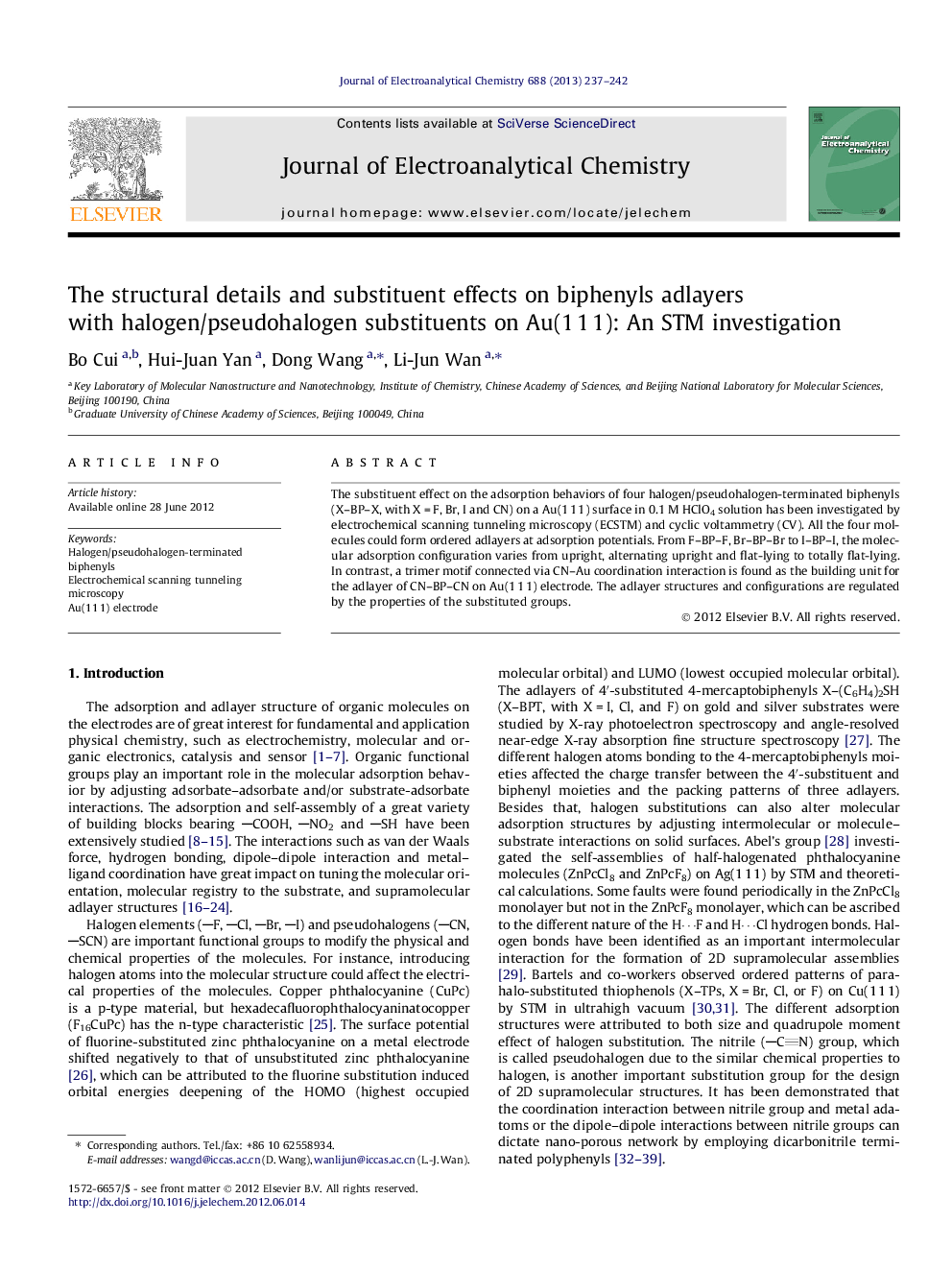| Article ID | Journal | Published Year | Pages | File Type |
|---|---|---|---|---|
| 219224 | Journal of Electroanalytical Chemistry | 2013 | 6 Pages |
The substituent effect on the adsorption behaviors of four halogen/pseudohalogen-terminated biphenyls (X–BP–X, with X = F, Br, I and CN) on a Au(1 1 1) surface in 0.1 M HClO4 solution has been investigated by electrochemical scanning tunneling microscopy (ECSTM) and cyclic voltammetry (CV). All the four molecules could form ordered adlayers at adsorption potentials. From F–BP–F, Br–BP–Br to I–BP–I, the molecular adsorption configuration varies from upright, alternating upright and flat-lying to totally flat-lying. In contrast, a trimer motif connected via CN–Au coordination interaction is found as the building unit for the adlayer of CN–BP–CN on Au(1 1 1) electrode. The adlayer structures and configurations are regulated by the properties of the substituted groups.
Graphical abstractFigure optionsDownload full-size imageDownload as PowerPoint slideHighlights► The adlayers of four halogen/pseudohalogen-terminated biphenyls were investigated. ► From F–BP–F to I–BP–I, the molecular configuration varies from upright to flat-lying. ► NC–BP–CN takes flat-lying configuration on Au(1 1 1) via CN–Au coordination.
